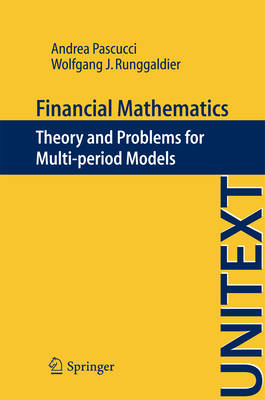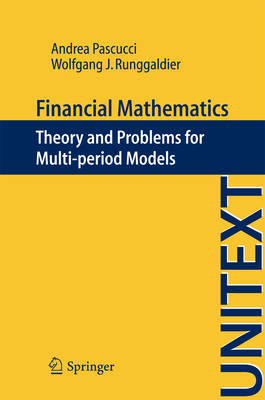
- Afhalen na 1 uur in een winkel met voorraad
- Gratis thuislevering in België vanaf € 30
- Ruim aanbod met 7 miljoen producten
- Afhalen na 1 uur in een winkel met voorraad
- Gratis thuislevering in België vanaf € 30
- Ruim aanbod met 7 miljoen producten
Zoeken
Financial Mathematics
Theory and Problems for Multi-Period Models
Andrea Pascucci, Wolfgang J Runggaldier
€ 41,45
+ 82 punten
Omschrijving
With the Bologna Accords a bachelor-master-doctor curriculum has been introduced in various countries with the intention that students may enter the job market already at the bachelor level. Since financial Institutions provide non negligible job opportunities also for mathematicians, and scientists in general, it appeared to be appropriate to have a financial mathematics course already at the bachelor level in mathematics. Most mathematical techniques in use in financial mathematics are related to continuous time models and require thus notions from stochastic analysis that bachelor students do in general not possess. Basic notions and methodologies in use in financial mathematics can however be transmitted to students also without the technicalities from stochastic analysis by using discrete time (multi-period) models for which general notions from Probability suffice and these are generally familiar to students not only from science courses, but also from economics with quantitative curricula. There do not exists many textbooks for multi-period models and the present volume is intended to fill in this gap. It deals with the basic topics in financial mathematics and, for each topic, there is a theoretical section and a problem section. The latter includes a great variety of possible problems with complete solution.
Specificaties
Betrokkenen
- Auteur(s):
- Uitgeverij:
Inhoud
- Aantal bladzijden:
- 294
- Taal:
- Engels
- Reeks:
Eigenschappen
- Productcode (EAN):
- 9788847025370
- Verschijningsdatum:
- 19/01/2012
- Uitvoering:
- Paperback
- Formaat:
- Trade paperback (VS)
- Afmetingen:
- 155 mm x 231 mm
- Gewicht:
- 544 g

Alleen bij Standaard Boekhandel
+ 82 punten op je klantenkaart van Standaard Boekhandel
Beoordelingen
We publiceren alleen reviews die voldoen aan de voorwaarden voor reviews. Bekijk onze voorwaarden voor reviews.











